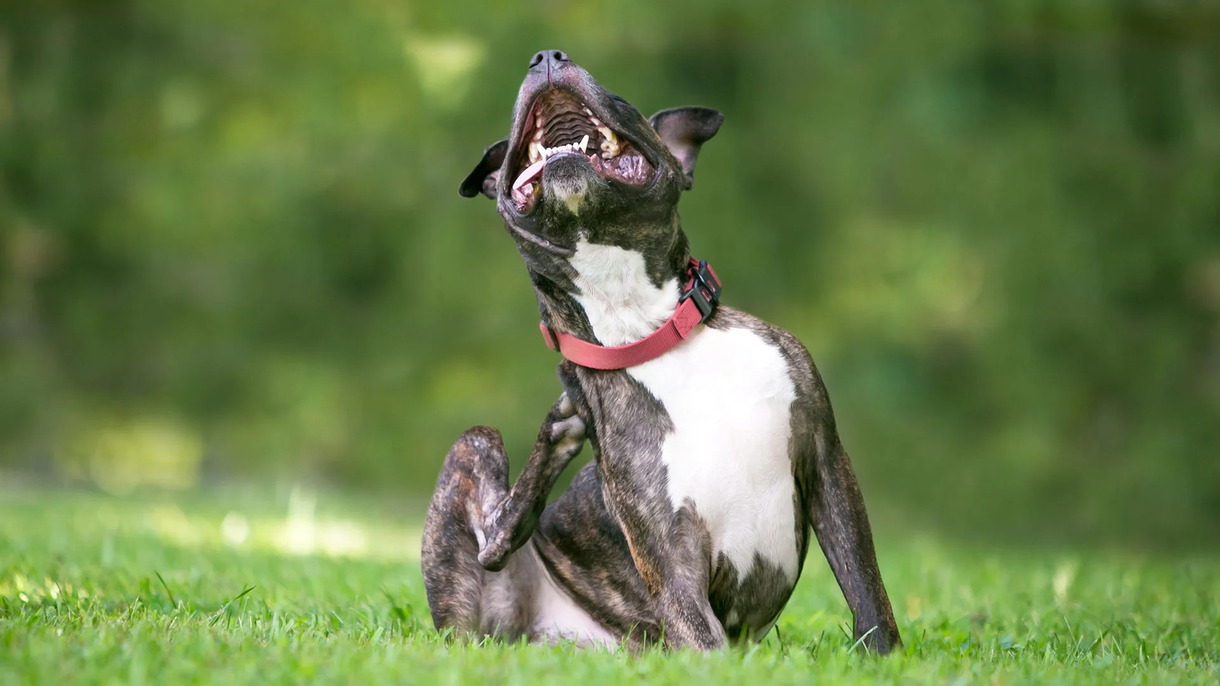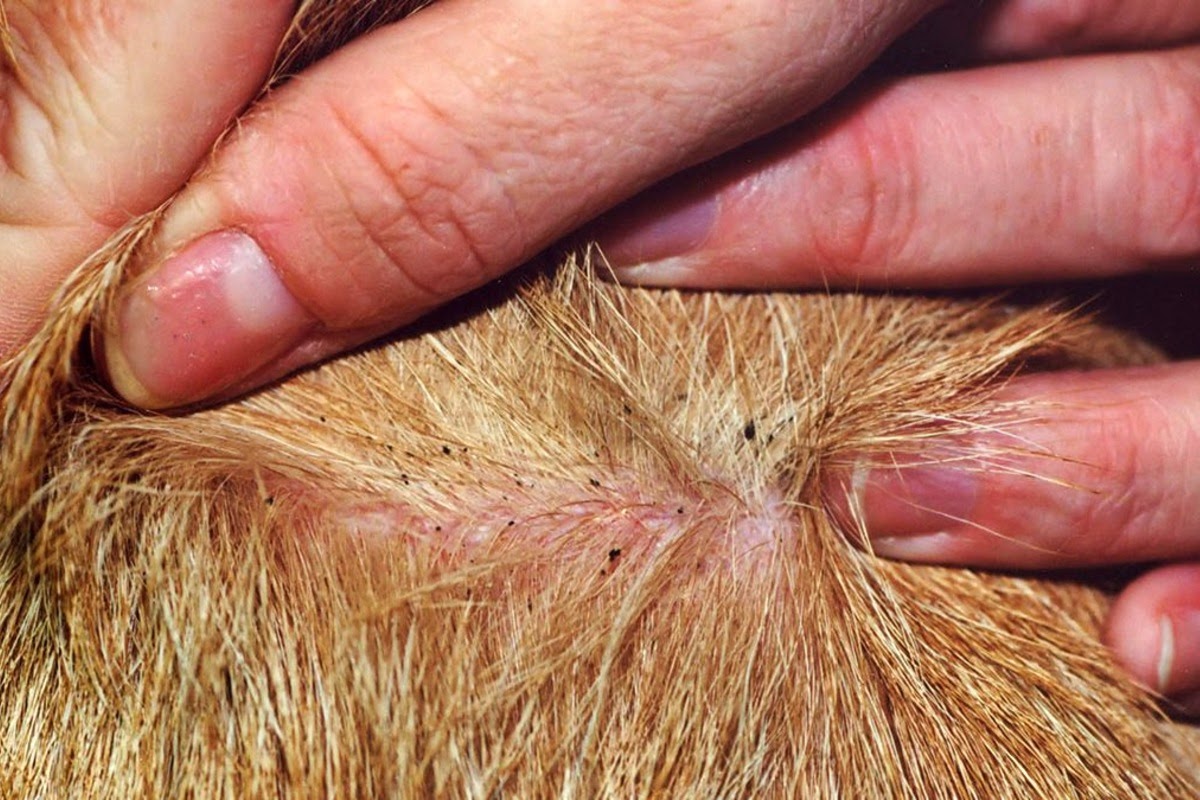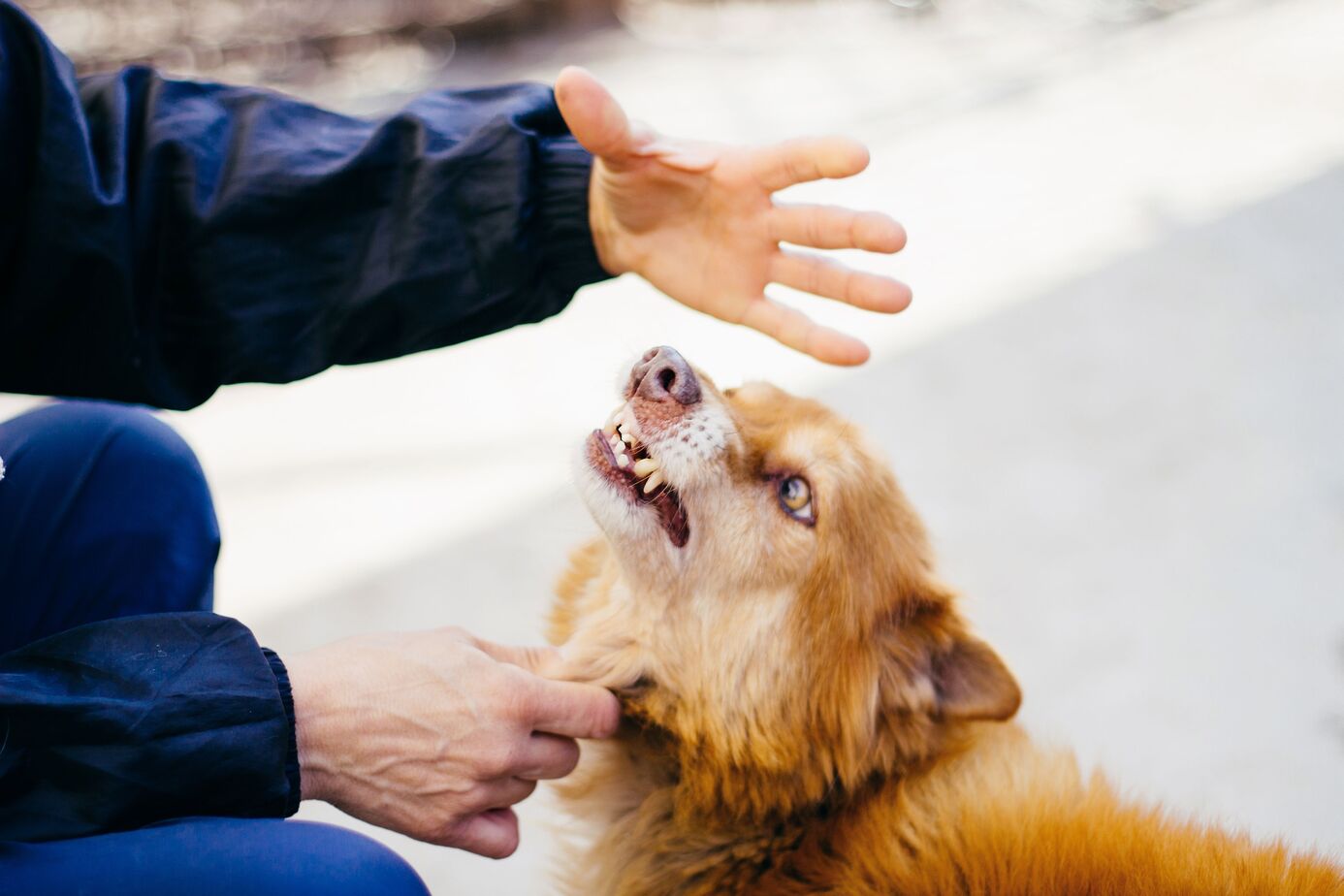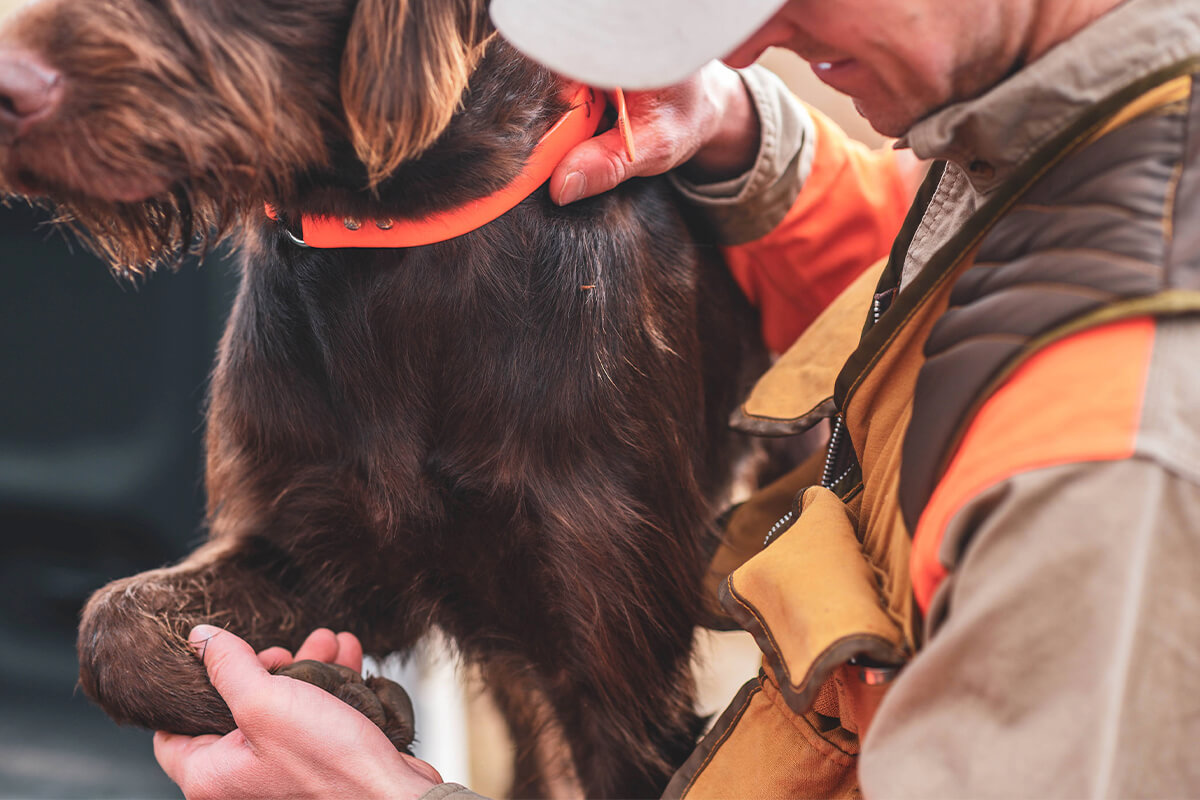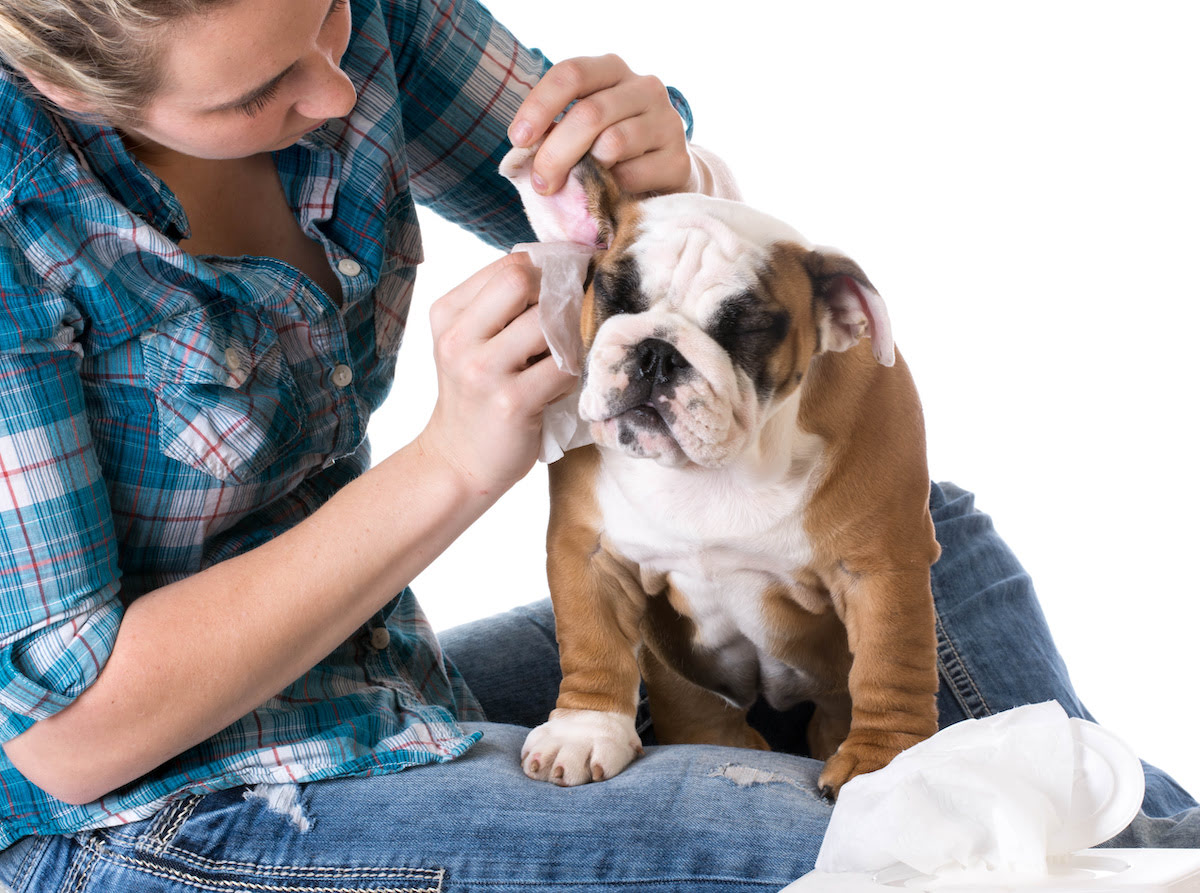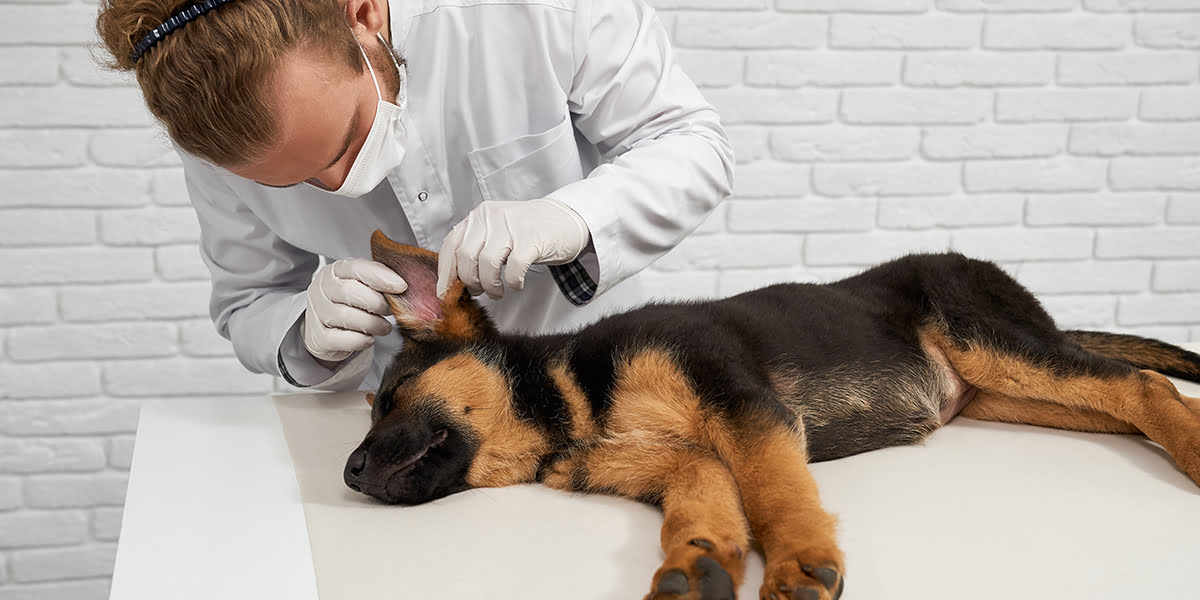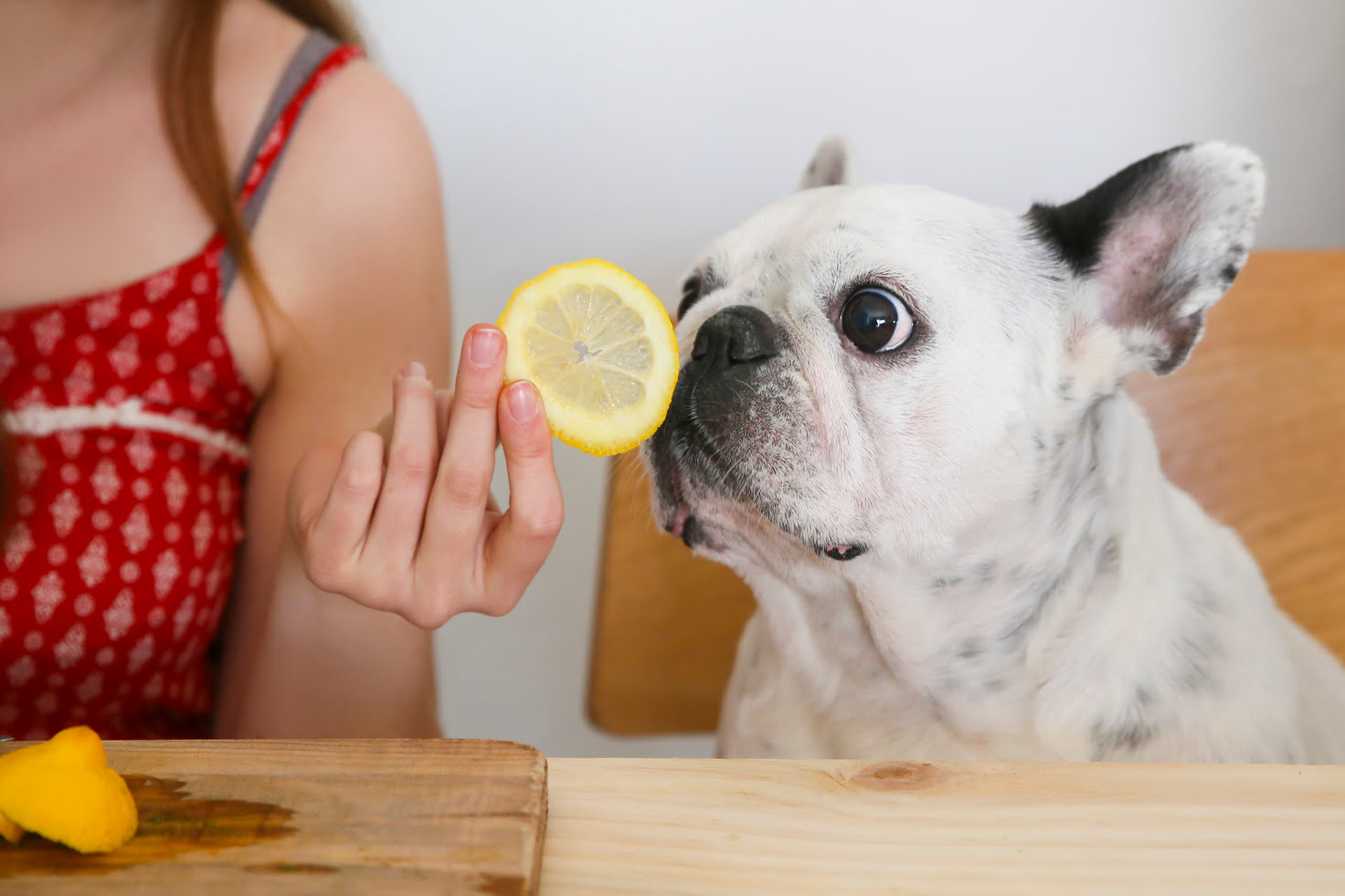Home>Health & Wellness>Common Health Issues>How To Prevent Fleas From Biting My Dog
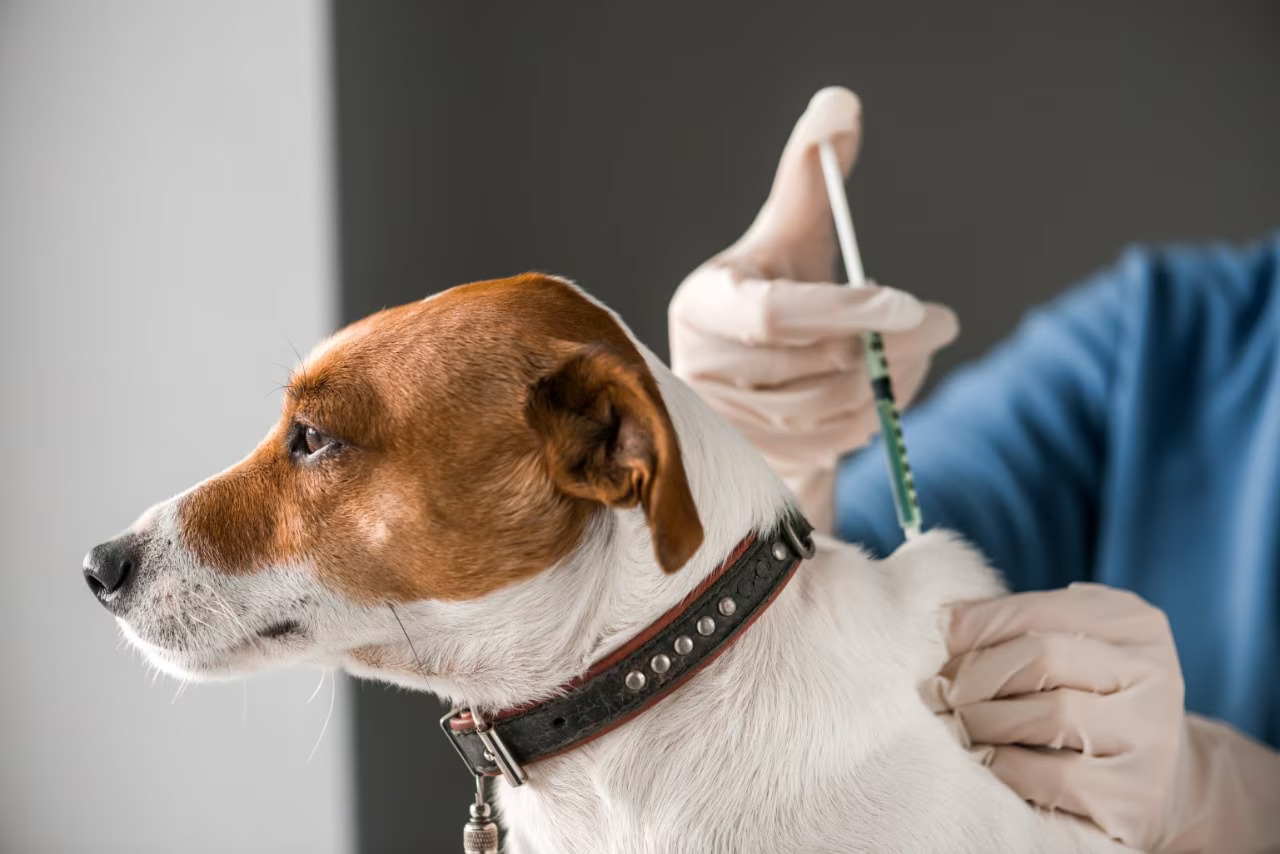

Common Health Issues
How To Prevent Fleas From Biting My Dog
Modified: February 21, 2024
Learn how to protect your dog from flea bites and other common health issues with our expert tips and advice. Prevent discomfort and keep your furry friend healthy.
(Many of the links in this article redirect to a specific reviewed product. Your purchase of these products through affiliate links helps to generate commission for Pawsomeoldies.com, at no extra cost. Learn more)
Table of Contents
Introduction
Fleas are not just a nuisance for dogs; they can cause discomfort, itching, and even transmit diseases. As a responsible pet owner, it's crucial to understand the potential risks associated with flea bites and take proactive measures to prevent them. By gaining insight into the behavior of fleas and recognizing the signs of flea bites on dogs, you can effectively safeguard your furry companion from these pesky parasites.
Understanding the habits and tendencies of fleas is essential for devising an effective prevention strategy. By familiarizing yourself with the signs of flea infestation and implementing preventive measures, you can create a safe and comfortable environment for your beloved pet. Additionally, exploring natural remedies for flea prevention can offer a holistic approach to keeping your dog free from these bothersome pests.
In this comprehensive guide, we will delve into the world of fleas, shedding light on their biting behavior, the telltale signs of flea bites on dogs, and a range of preventive measures to keep your canine companion flea-free. Furthermore, we will explore natural remedies that can serve as gentle yet effective alternatives to conventional flea prevention methods. By the end of this article, you will be equipped with the knowledge and tools to protect your dog from the discomfort and health risks associated with flea bites.
Read more: How To Prevent Fleas From Dogs
Understanding Fleas and Their Biting Behavior
Fleas are tiny, wingless parasites that survive by feeding on the blood of mammals, including dogs. These minuscule pests possess specialized mouthparts designed for piercing the skin and siphoning blood, enabling them to sustain their life cycle. Understanding the biting behavior of fleas is crucial for implementing effective preventive measures and protecting your dog from discomfort and potential health issues.
Fleas are adept jumpers, capable of leaping impressive distances relative to their size. This agility allows them to easily transfer from one host to another, making it essential to address flea infestations promptly. Once on a dog, fleas seek out warm, sheltered areas to feed, often targeting regions with less hair, such as the abdomen, groin, and armpits. Their bites can cause intense itching and discomfort for the host, leading to excessive scratching and potential skin irritation.
The saliva of fleas contains compounds that can trigger allergic reactions in some dogs, resulting in dermatitis and further exacerbating the itching and discomfort caused by flea bites. Moreover, fleas can transmit diseases such as tapeworms and bartonellosis, posing additional health risks to dogs.
Understanding the life cycle of fleas is integral to comprehending their biting behavior. Fleas progress through four stages: egg, larva, pupa, and adult. The adult flea, once emerged, immediately seeks a host for blood meals to support reproduction. Female fleas can lay hundreds of eggs on a host, which then fall off into the environment, perpetuating the infestation cycle.
By gaining insight into the behavior and habits of fleas, pet owners can proactively address potential infestations and protect their dogs from the discomfort and health risks associated with flea bites. Recognizing the signs of flea infestation and understanding the factors that contribute to their proliferation are essential steps in formulating an effective flea prevention strategy.
Identifying Signs of Flea Bites on Dogs
Identifying signs of flea bites on dogs is crucial for prompt intervention and effective flea prevention. Flea bites often manifest as small, red, raised bumps on the skin, typically accompanied by intense itching. These bites are commonly found on the dog's abdomen, groin, armpits, and the base of the tail, as fleas tend to target areas with less hair for feeding. Additionally, excessive scratching, biting, or licking, especially in these specific regions, may indicate the presence of flea bites.
One of the most telling signs of flea infestation is the presence of flea dirt, which appears as tiny, dark specks on the dog's skin and fur. Flea dirt is actually flea feces consisting of digested blood and is a clear indicator of an active flea population on the dog. When moistened, flea dirt may produce a reddish-brown stain, further confirming its presence.
Furthermore, dogs with flea infestations may exhibit signs of skin irritation, such as redness, inflammation, and hair loss in the affected areas. The continuous discomfort caused by flea bites can lead to dermatitis, characterized by skin lesions, scabs, and hot spots. In severe cases, dogs may develop anemia due to the loss of blood from persistent flea feeding.
Observing behavioral changes in dogs can also provide insights into potential flea bites. Dogs experiencing discomfort from flea infestations may display restlessness, agitation, and irritability. They may excessively groom themselves, focusing on areas where flea bites are concentrated, in an attempt to alleviate the itching and discomfort.
Regularly inspecting your dog's skin and fur for signs of flea bites and closely monitoring their behavior can aid in early detection and prompt intervention. If you notice any of the aforementioned signs, it is essential to take proactive measures to address the flea infestation and prevent further discomfort for your canine companion.
By recognizing the signs of flea bites on dogs, pet owners can swiftly implement appropriate flea control measures, such as topical treatments, oral medications, and environmental management, to alleviate the discomfort caused by flea bites and safeguard their dogs from the potential health risks associated with flea infestations.
Preventive Measures for Flea Bites
Preventing flea bites is essential for maintaining the well-being of your dog and ensuring a comfortable, pest-free environment. Implementing a comprehensive approach to flea prevention encompasses various strategies that target both the dog and its living spaces. By integrating preventive measures into your routine pet care, you can effectively mitigate the risk of flea infestations and minimize the likelihood of flea bites on your canine companion.
-
Regular Grooming: Establishing a consistent grooming routine for your dog is a fundamental aspect of flea prevention. Regularly brushing your dog's coat not only helps in removing loose hair and debris but also enables you to detect the presence of fleas or flea dirt. Additionally, bathing your dog with a veterinarian-recommended flea shampoo can effectively eliminate existing fleas and deter future infestations.
-
Topical Treatments: Utilizing veterinarian-prescribed topical flea treatments can provide long-lasting protection against fleas. These treatments are applied directly to the dog's skin and effectively disrupt the flea life cycle, preventing infestations and reducing the risk of flea bites. It is crucial to follow the application instructions provided by the veterinarian for optimal efficacy.
-
Oral Medications: Oral flea prevention medications offer a convenient and effective means of safeguarding your dog from flea infestations. These medications typically target fleas at various life stages, including eggs and larvae, providing comprehensive protection. Consult your veterinarian to determine the most suitable oral flea prevention option for your dog based on their health status and lifestyle.
-
Environmental Management: Flea prevention extends beyond the dog to encompass its living environment. Regularly vacuuming carpets, upholstery, and pet bedding can help eliminate flea eggs, larvae, and pupae, reducing the likelihood of infestations. Washing your dog's bedding in hot water and maintaining a clean living space can significantly contribute to flea prevention.
-
Outdoor Protection: When spending time outdoors, particularly in areas where fleas are prevalent, consider using flea and tick repellent products recommended by your veterinarian. These products can provide an additional layer of defense against fleas, minimizing the risk of bites during outdoor activities.
-
Regular Veterinary Check-ups: Scheduling routine veterinary check-ups for your dog allows for comprehensive health assessments, including flea monitoring and prevention. Veterinarians can recommend tailored flea prevention strategies based on your dog's specific needs, ensuring proactive protection against flea infestations.
By incorporating these preventive measures into your dog's care regimen, you can effectively minimize the risk of flea bites and create a comfortable, flea-free environment for your beloved pet. Consistency and diligence in implementing these strategies are key to maintaining optimal flea prevention and safeguarding your dog's well-being.
Natural Remedies for Flea Prevention
In addition to conventional flea prevention methods, natural remedies offer gentle yet effective alternatives for safeguarding your dog from flea infestations. These natural approaches not only contribute to flea prevention but also promote a holistic and environmentally friendly approach to pet care.
1. Herbal Flea Collars
Herbal flea collars infused with natural repellents such as essential oils can serve as a non-toxic and aromatic deterrent against fleas. Essential oils such as lavender, cedarwood, and eucalyptus possess natural flea-repelling properties, making them valuable components of herbal flea collars. These collars emit a subtle fragrance while effectively deterring fleas, providing a natural and pleasant alternative to conventional chemical-based collars.
2. Diatomaceous Earth
Diatomaceous earth, a fine powder derived from fossilized algae, acts as a natural desiccant that effectively dehydrates and eliminates fleas upon contact. When applied to your dog's coat and living spaces, diatomaceous earth serves as a non-toxic yet potent flea deterrent. Its microscopic sharp edges penetrate the exoskeleton of fleas, leading to dehydration and ultimately, their demise. Regular application of food-grade diatomaceous earth can contribute to long-term flea prevention without posing harm to your dog or the environment.
3. Apple Cider Vinegar Spray
A diluted apple cider vinegar spray can serve as a natural flea repellent for dogs. When applied topically, the acidic nature of apple cider vinegar creates an environment that is unfavorable for fleas, deterring their presence on your dog's skin and coat. Additionally, incorporating small amounts of apple cider vinegar into your dog's diet can alter their internal pH levels, making them less appealing to fleas. This natural approach not only aids in flea prevention but also offers potential health benefits for your dog's overall well-being.
4. Herbal Flea Baths
Herbal flea baths utilizing natural ingredients such as rosemary, chamomile, and neem offer a soothing and effective means of flea prevention. These herbs possess natural flea-repelling properties and can be steeped to create a herbal infusion for bathing your dog. The gentle yet potent nature of herbal flea baths not only helps in repelling fleas but also contributes to maintaining your dog's skin and coat health, providing a holistic approach to flea prevention.
Read more: How To Prevent Social Anxiety In My Dog
5. Regular Yard Maintenance
Maintaining a well-groomed and tidy yard can significantly contribute to natural flea prevention. Regularly mowing the lawn, trimming shrubbery, and removing debris minimizes the presence of flea habitats in outdoor spaces. Additionally, planting natural flea-repelling herbs such as lavender, mint, and lemongrass in your yard can serve as a natural deterrent against fleas, creating a harmonious and pest-resistant outdoor environment for your dog.
By incorporating these natural remedies into your flea prevention regimen, you can effectively minimize the risk of flea infestations while embracing a natural and holistic approach to caring for your dog. These gentle yet potent alternatives offer sustainable and environmentally conscious methods of flea prevention, contributing to the well-being and comfort of your beloved pet.
Conclusion
In conclusion, safeguarding your dog from flea bites is a fundamental aspect of responsible pet care, ensuring their comfort, well-being, and overall health. By gaining a comprehensive understanding of fleas and their biting behavior, pet owners can proactively address potential infestations and implement effective preventive measures. Recognizing the signs of flea bites on dogs, such as red bumps, flea dirt, skin irritation, and behavioral changes, enables early detection and intervention, minimizing the discomfort caused by flea infestations.
Implementing preventive measures for flea bites is essential for creating a pest-free environment for your dog. Regular grooming, including brushing and bathing with veterinarian-recommended flea shampoo, serves as a proactive approach to flea prevention. Additionally, utilizing topical treatments, oral medications, and environmental management strategies contributes to comprehensive flea control, minimizing the risk of flea bites and infestations.
Furthermore, integrating natural remedies into your flea prevention regimen offers gentle yet effective alternatives for safeguarding your dog from fleas. Herbal flea collars, diatomaceous earth, apple cider vinegar spray, herbal flea baths, and regular yard maintenance present sustainable and environmentally conscious methods of flea prevention, promoting a holistic approach to pet care.
By consistently implementing these preventive measures and natural remedies, pet owners can create a comfortable and flea-free environment for their beloved dogs, minimizing the risk of flea bites and associated health risks. Regular veterinary check-ups and proactive flea monitoring further contribute to comprehensive flea prevention, ensuring the well-being of your canine companion.
In essence, by understanding the behavior of fleas, recognizing signs of flea bites, and integrating preventive measures and natural remedies, pet owners can effectively protect their dogs from the discomfort and health risks associated with flea infestations. Embracing a proactive and holistic approach to flea prevention not only ensures the well-being of your dog but also fosters a harmonious and pest-resistant environment, allowing your canine companion to thrive in a comfortable and flea-free setting.
